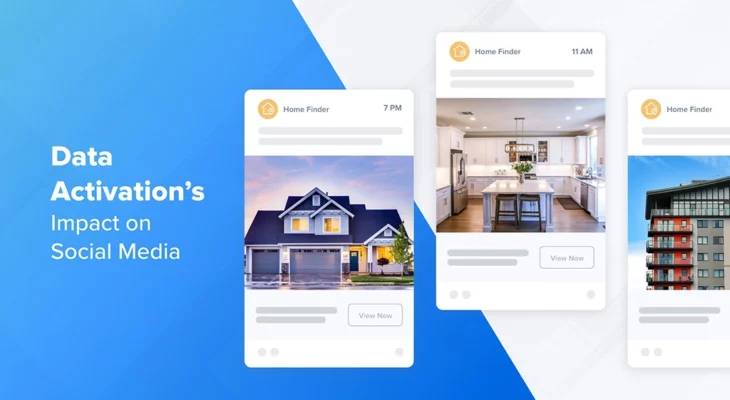Social media is one of the most powerful tools at both B2B and B2C companies’ disposal. Both paid and organic campaigns are an extremely lucrative way for businesses of all sizes to reach new customers, re-target, and convert valuable brand loyalists. And, data from social media can also help inform the customer journey in turn. Platforms like Instagram and Facebook are making it easier than ever to design advertisements, build segments, and push them out to ideal audiences all by hand. But, that can be time consuming, costly, and most importantly — not the most effective way to reach social media users. Data activation is here to revolutionize the way brands do social media marketing.
Data Activation’s Impact on Social Media

WHAT EXACTLY IS DATA ACTIVATION?
Data activation is the process by which customer experiences are shaped by the entirety of your data. Each and every digital interaction a customer has with your brand is guided by a holistic, up-to-the-moment understanding of customers—including all prior transactions, on-site and offline behaviors, campaign engagement, catalog data, real-time actions, and other customer attributes gathered across channels and devices. All of your first-party data, from any source, is powered with AI and machine learning enabling marketers to create amazing customer experiences that outperform more traditional automation methods. And given that most platforms are so crowded (Facebook alone hosts 7 million advertisers), brands need a data-driven way to stand out.
DATA ACTIVATION FINDS NEW, HIGH-PERFORMING CUSTOMERS
As consumer expectations for data privacy grow, the power of 3rd party data is waning. So, the task of obtaining new, high value customers must be near to impossible for marketers, right? Well, it doesn’t have to be when existing, first-party data is activated to its full potential. With Blueshift’s Customer Data Activation Platform (CDAP), once marketers have built out, tested, and vetted their most valuable customer segments, they can in turn be used to find new customers.
Through Audience Syndication, high-performing segments can be exported and pushed into channels like Facebook, Instagram, and Google to find new, look-alike audiences. These new target customers can be served similar messaging to their veteran counterparts — with great results. Blueshift customer, Vouchercloud has found this feature, along with pushing retargeting messaging across social media, to be extremely valuable in terms of growth, retention, and loyalty.
DATA ACTIVATION’S IMPACT ON SOCIAL ENGAGEMENT
Activating data relies on the use of a platform, such as Blueshift’s CDAP, to do the heavy lifting of data rationalization, organization, analysis, and decision making, which frees marketers to focus on what they do best, develop new campaigns and focus on other higher priorities and initiatives. Once data has been unified into unique customer profiles and fed through AI-powered decisioning, marketers can now effectively precisely target users on social channels and drive them back to your site for conversion.
One of the most powerful tools within the platform is Adaptive Segmentation. This feature allows marketers to create real-time, highly detailed segments in just a few clicks, that are constantly updated with the latest customer behaviors and catalog data and reflected within live campaigns. It’s possible to create a segment of your most high-value, high-intent customers who have navigated to your brand’s site or app in the last 30 days, but have yet to purchase. In minutes, that segment is pulled, and the best course of action for each single customer is mapped out within the journey builder.
Say for example, your customer Social Sarah had just been eyeing a new product on your app, and has bought a few items from your website in the past. At the most optimal time for Sarah, when she opens Facebook or Instagram the perfect message for her will appear — and she’ll click thru and back to complete her purchase. This highly complex decision making process requires little hands on work from your marketing team — no updating lists, no channel selection, or timing guesswork. And don’t just take our word for it — on average, personalized ads see a 3.3x higher CTR than their traditional counterparts.
Social media is a powerful tool, but it’s only once piece of the larger customer journey. Marketers need a platform that can provide a consistent, personalized experience across every channel to win in 2020 and beyond.


